#chinle
Explore tagged Tumblr posts
Text

I am looking for theirs… if you have any of them please let me know. I can share what I have to share.
218 notes
·
View notes
Photo

Rivulets in Bentonite by DM Weber
5 notes
·
View notes
Text

Adventure Photography
Chinle Badlands, Gingham Skirt Butte in the Grand Staircase Escalante National Monument of Utah.
by Keith Ladzinski
#keith ladzinski#photographer#chinle badlands#landscape#adventure photography#gingham skirt butte#grand staircase escalante national monument#utah#nature
51 notes
·
View notes
Text
Sunday Scribbles: How to Draw a Coelophysis
I thought I would show you one way I draw dinosaurs. This character I am about to show you comes from a novel I am writing that takes place on an Earth-like planet where dinosaurs did not go extinct but evolved into an intelligent race called Avekians.
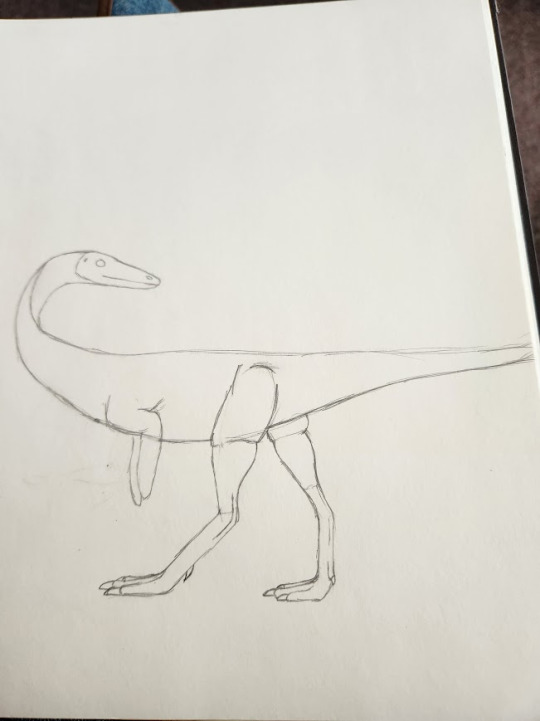
Niko is a Coelophysis, more commonly called a Ghost Ranch Tit by the locals (ignore the name on the page, I changed it when I realized it didn't fit the Avekian language anymore).
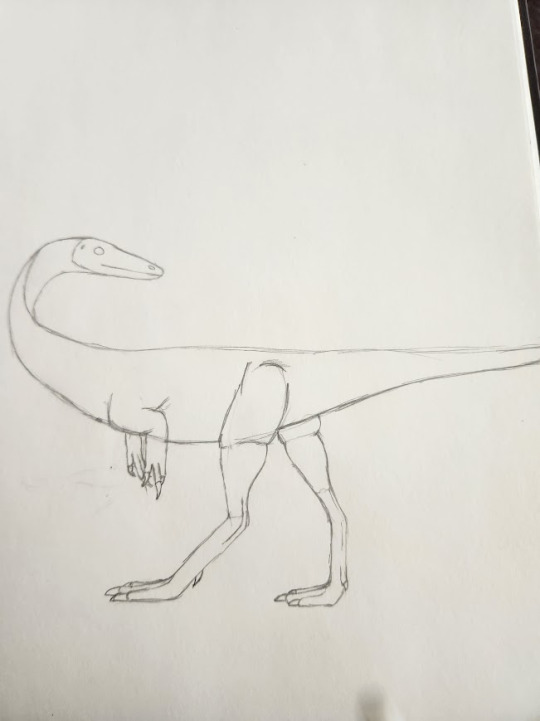
They hail from the Unkata Desert of Laranidia in the Kingdom of Kuloviu. Nico lives on a Krane ranch and belongs to the only human in the land, Dimitri.

Real Coelophysis lived during the Late Triassic Period around 210-201 million years ago in North America. They have been found in Arizona and New Mexico with possible remains found in Colorado.
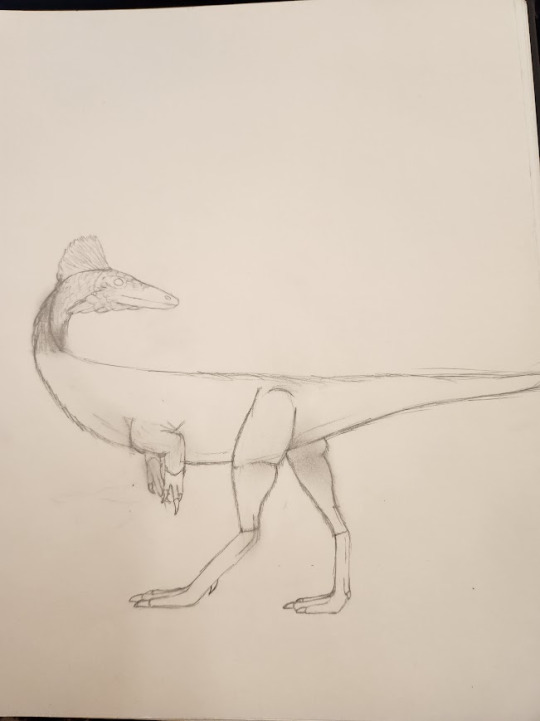
Coelophysis was about 10 feet long and lived in seasonally wet forests alongside animals like Placerias, Smilosuchus, Desmatosuchus, Postosuchus, Shuvosaurus, and other dinosaurs including Chindesaurus, Camposaurus, Daemonosaurus, and Tawa.
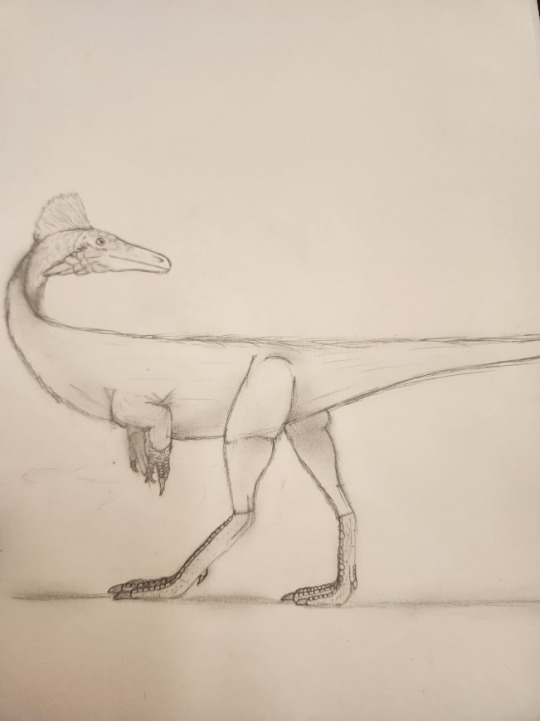
An important think to note when drawing any kind of animal: muscle definition, meat! Fill in all the spaces! You should not be able to see the wholes in the skull or the shape of the hip bones. Remember, dinosaurs are not mammals and their legs should not look mammalian! Sometimes, I draw a basic skeleton outline first and fill in around. Perhaps I will show you that on a future Sunday.

The fun thing with most dinosaurs: you can make them any pattern and any color you want! We only know the color and pattern for a handful of exceptionally well preserved dinosaurs (Archaeopteryx, Microraptor, etc).

I based Nico's plumage off of two real life birds: Anna's Hummingbird and the Greater Roadrunner. Both found in dry, arid places in North America, one of the continents Laranidia is based off of.

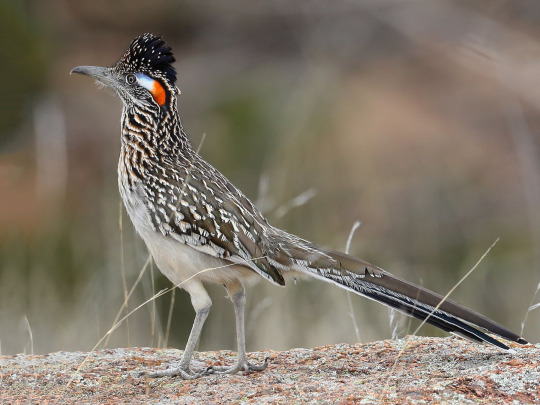
Interested in Coelophysis? Well guess what? We might have found one out near our Evil Tree Bonebed site in our Triassic Chinle rocks. As part of our Field Paleontology Course, we teach students how to prospect. So if you want to come out this summer and help us find the rest of our potential Coelophysis, check out the link below. Hope to see you there!
#paleontology#dinosaur#fossils#geology#coelophysis#chinle formation#how to draw#how to draw dinosaurs#paleoart#paleoliterature#sci fi and fantasy
43 notes
·
View notes
Text

pokemon water and pokemon fountain this is true
#art#pokemon#water fountain#magnemite#buizel#maractus#lotad#snom#Chinling#chimecho#I give up I’m not writing all this
6 notes
·
View notes
Text
Triassic Double Feature
Just weeks ago I remissed the lack of new croc taxa, seems I spoke to soon because they are being pumped out like crazy right now. For simplicity, I will cover two of the recent sorta-crocs together as neither are super extensive and they match in overall time.
These two new genera are the aetosaur Kryphioparma and the phytosaur Jupijkam. Pictured below the fossils of both with reconstructions of close relatives (art by Brian Engh and Gabriel Ugueto).
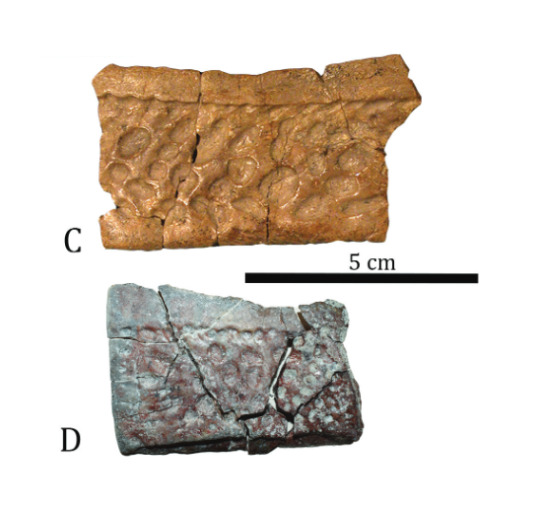

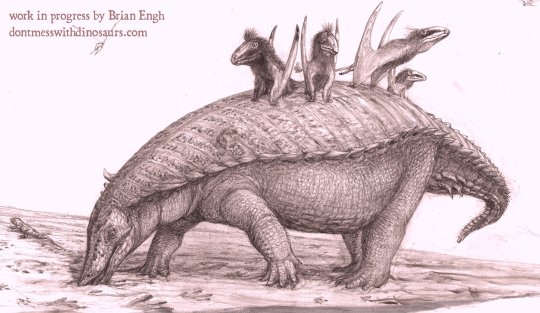

I'll start with Kryphioparma, which I wager is the less interesting of the two. Kryphioparma was an aetosaur, which are effectively early pseudosuchians that evolved a body type very similar to what nodosaurs did later. Heavily armored, sometimes with prominent spikes and herbivorous.
Kryphioparma is only known from four isolated and incomplete osteoderms, and though these are actually diagnostic and highly distinct, it does mean there's not super much to say. Hell, the scientific name literally means "mysterious shield" in reference to how little we know.
Regardless, scientists did determine two things. 1) It's a typothoracine aetosaur, narrowing down its placement to one of the two main branches. This means its closer related to Typothorax (with its armored cloaca) than to Desmatosuchus (with its shoulder spikes). 2) The second thing we know is that it wasn't alone. No, the localities that yielded its bones (Placerias Quarry and Thunderstorm Ridge) actually preserve a highly diverse aetosaur fauna, including Calypsosuchus, Tecovasuchus and two species of Desmatosuchus. All images by Jeff Martz.

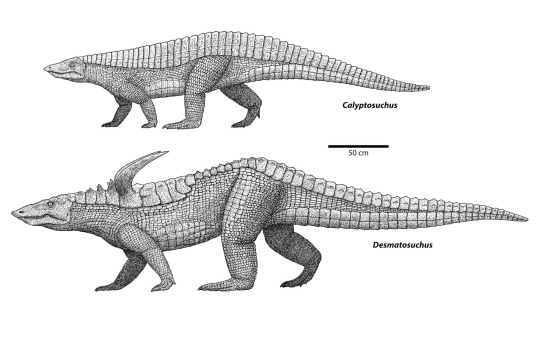
Now the arguably more exciting find is that of Jupijkam, a type of phytosaur, which are archosaurs superficially resembling today's crocodiles. Now when I grew up, phytosaurs used to be considered to be entirely unrelated to crocs, being a type of archosaur believed to have diverged prior to the bird-croc split. However, it would appear that recent studies suggest that they could actually be true croc-line archosaurs, potentially being the earliest diverging group of Pseudosuchian.
Jupijkam is from the Rhaetian-Norian Blomidon Formation of Novia Scotia, Canada. This not only makes it one of the youngest, but also one of the northern-most known phytosaurs to date. It's scientific name, Jupijkam, is actually derived from the name given by the local Mi’kmaq people to their version of the horned serpent.
How Jupijkam is related to other phytosaurs is a bit wonky. Now generally, its recovered as a mystriosuchine, which isn't exactly a surprise given that most phytosaurs fall into this category. It's placement however shifts ever so slightly depending on the precise methods and characters used. 2/4 times it was found to be most closely related to Rutiodon (the phytosaur shown at the very start), once alongside the Indian Volcanosuchus and once to its exclusion. One tree simply results in a big polytomy which isn't really helpful, and one time it was found as a much more derived form related to Mystriosuchus. Whatever the case, additional finds both of other phytosaurs and Jupijkam specifically might clarify this in the future. Currently however, it seems that this form is not related to all the other American species of its time, suggesting it held out till the late Triassic independently. Which is pretty neat. Below you can see a comparisson between Jupijkam and some other slender-snouted phytosaurs, courtesy of Brownstein 2023. A is Jupijkam, B is Rutiodon and C is Machaeroprosopus

Really that wraps things up already, two new genera, both Triassic, both (potentially) early Pseudosuchians. A little bit out of my usual focus but very interesting none the less. Definitely gotta make another post soon since they just dropped yet another new one (a metriorhynchid), but I gotta read that paper first. Speaking of which A new aetosaur (Archosauria: Pseudosuchia) from the upper Blue Mesa Member (Adamanian: Early–Mid Norian) of the Late Triassic Chinle Formation, northern Arizona, USA, and a review of the paratypothoracin Tecovasuchus across the southwestern USA (escholarship.org) A late-surviving phytosaur from the northern Atlantic rift reveals climate constraints on Triassic reptile biogeography | BMC Ecology and Evolution | Full Text (biomedcentral.com) plus the respective Wikipedia pages Kryphioparma - Wikipedia Jupijkam - Wikipedia
#pseudosuchia#phytosaur#aetosaur#croc#palaeoblr#paleontology#prehistory#triassic#chinle formation#Kryphioparma#Jupijkam#long post#science#reptiles
40 notes
·
View notes
Text
WARNING: a bit gore

This art isn't exactly typical for this blog, but I actually really enjoy drawing paleoart.
This is Triodus, a xenacanth fish. It caught a smaller fish. In addition to it, it also shows lungfish and phytosaurs that coexisted with Triodus.
I'll probably continue to dilute my blog with something different from the main subject matter.
#art#paleoart#triassic#triodus#xenacanth#fish#chinle formation#i have little experience in drawing xenacanths so this one has some anatomical mistakes.#freshwater
14 notes
·
View notes
Video
This Is Nature Petrified Forest Country (Petrified Forest Park) by Mark Stevens Via Flickr: A view looking to the northeast across this high desert, Arizona landscape covered with fragments of petrified wood, while walking the Long Logs area. The badlands off in the distance were that far-off backdrop to this setting in the image.
#Arizona Petrified Forest National Park and Sedona#Azimuth 19#Badlands#Blue Skies#Chinle Formation#Colorado Plateau#Colorful Badlands#Day 3#Desert#Desert Grassland#Desert Landscape#Desert Plant Life#DxO PhotoLab 4 Edited#Intermountain West#Landscape#Landscape - Scenery#Long Logs#Looking NE#Nature#Nikon D850#No People#Outside#Painted Desert#Petrified Forest#Petrified Forest National Park#Petrified Wood#Petrified Wood Fragments#Project365#Scenics - Nature#SnapBridge
4 notes
·
View notes
Text



I am looking for her nudes….. if you have any I am wiling to trade for them.
69 notes
·
View notes
Text
Light Speed to Reality
As an interesting experiment I thought I would look back ten years and repost what I was doing then. I am delighted by the outcome. My wife Peggy and I were returning to Frankfort from Arizona. We had spent an extraordinary winter visiting friends and enjoying the magnificent sunshine in the Valley of the Sun. This was first posted on 24 April 2014. This morning we left a chilly rainy 65 degree…

View On WordPress
0 notes
Link
Holiday Inn Canyon De Chelly-Chinle At Always get the assistance you need with front desk services including concierge service, express check-in or check-out, luggage storage and safety deposit boxes. Booking the best tickets and getting the hottest restaurant reservations are made easy with help from the hotel's ticket service. For longer stays or whenever you need it, the laundromat, dry cleaning service and laundry service keep your favorite travel outfits clean and available. Feel like doing nothing? Available services like room service and daily housekeeping let you get the most out of your time at the All your minor, last-minute needs can be taken care of by the convenience stores without having to go anywhere. For health reasons, smoking is not permitted anywhere inside the hotel. For guests who would like to smoke, the designated smoking areas are available. All rooms at Don't worry about being thirsty as a refrigerator and a coffee or tea maker are provided in some guestrooms....
0 notes
Text

Phytosaur vertebrae and leg bone. Late Triassic. Chinle Formation, Shinarump member.
0 notes
Text
Anyone have anything on this Chinle chick?



275 notes
·
View notes



